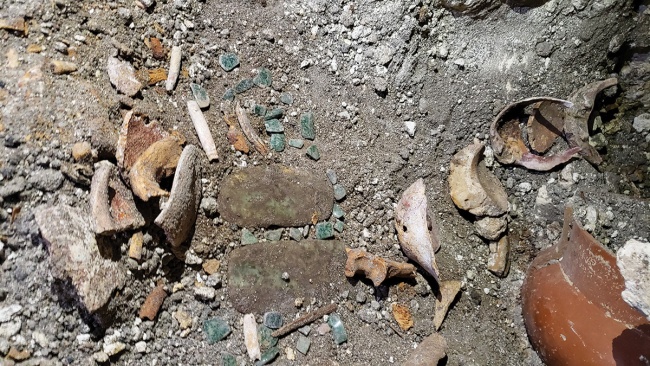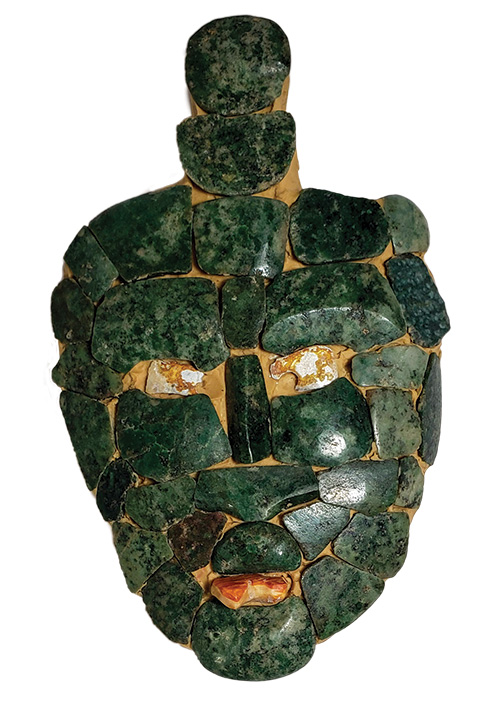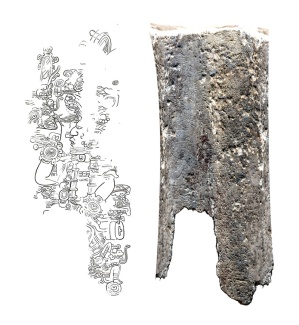Above: The excavation site of an ancient Maya tomb discovered in Chochkitam, Guatemala. The tomb and relics inside date back 1,700 years. (Photo by Francisco Estrada-Belli/Tulane University)
The tomb holds extraordinary funeral offerings, including a mosaic jade mask, rare mollusk shells and writings carved in human femur bones. One depicts the profile of a man who is believed to be a previously unknown king holding a jade mask like the one found in the tomb. Hieroglyphs on the artifact are thought to identify the king’s father and grandfather, linking the ruler to the Maya states of Tikal and Teotihuacan.
“A discovery like this is a bit like winning the lottery in terms of information,” said Francisco Estrada-Belli, the lead archaeologist who discovered the tomb in 2022 and has since been working to preserve, scan, photograph and interpret the finds. “It opens a window into an obscure time we have very little texts about.”
The height of the Maya classic period spans 250-900 AD, and little remains of that time due largely to looting of archaeological sites. Estrada-Belli and his team discovered the tomb only about 2 meters (6 feet) from where looters had stopped digging.
They were fortunate that the only damage to the tomb, besides natural decay, was the stone ceiling of the tomb collapsing in on itself.
“That was the first amazing thing about it,” said Estrada-Belli, a research professor in the School of Liberal Arts. “It was very lucky.”

































































